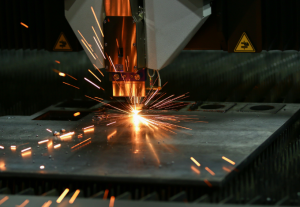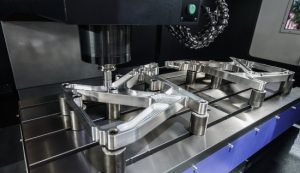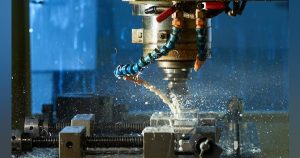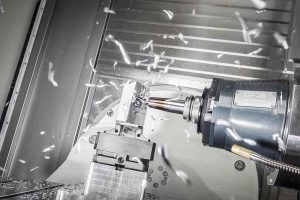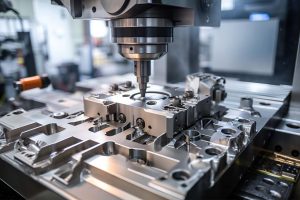Common sheet metal processing materials include steel, aluminum, and copper. In 2023, the demand for steel reached 160 million tons, aluminum 65 million tons, and copper 2.8 million tons, each with widespread applications and excellent performance.
Steel Plates
Steel plates are needed in the construction, manufacturing, and automotive industries. By 2023, the global steel plate market size will reach 160 million tons, and it is expected to reach 200 million tons by 2025.
Steel plate thickness is usually more than 0.35 mm. When the thickness stops at around 0.5 mm, it turns yellow and becomes steel plate rather than being called sheet metal. For example, steel plates used in automobile manufacturing are usually thicker than 1.5 mm, making them ideal for the construction industry.
The tensile strength of steel plates is generally between 250 MPa and 550 MPa, while high-strength steel plates exceed 700 MPa. In comparison, the tensile strength of Shinkansen steel plates is 900 MPa.
There are various methods to produce steel plates, including cold rolling, hot rolling, and galvanizing. Cold-rolled steel plates are used for precision parts due to their high surface smoothness and good workability. Hot-rolled steel plates, with their high strength and good toughness, are widely used in the construction and shipbuilding industries. Galvanized steel plates, which are coated with a layer of zinc, enhance their corrosion resistance.
The steel industry is reducing energy consumption and waste gas emissions. According to the World Steel Association, the steel industry will further reduce carbon emissions by 5% in 2022.

Aluminum Plates
Aluminum plates have good applications in aviation, construction, and automobile manufacturing. In 2023, the global consumption of aluminum plates is 65 million tons, and it may reach about 80 million tons by 2028. By weight, most of the Boeing 787 Dreamliner is made of aluminum alloy, reducing the takeoff weight of the aircraft by 20%.
The thickness of aluminum plates ranges from 0.2 mm to 200 mm. In construction, the most common thickness is 1.5-3 mm (0.059-0.118 inches), and these thicknesses are used for curtain wall materials and now also for roofs, reflecting their excellent workability. They can be installed in large parallel areas while maintaining functionality. In automobile manufacturing, aluminum plates with a thickness of 0.8 to 2 mm are used to make body panels, thereby reducing the overall weight of the vehicle.
The tensile strength of aluminum plates ranges from 70 MPa to 700 MPa. For example, the 7075 aluminum alloy, with a tensile strength of up to 572 MPa, is used for aircraft structures and some high-end sports equipment. Entrepreneur Elon Musk has said, “Lightweighting is the key to the future of transportation, and aluminum materials play an important role in it.”
Aluminum plates are made using cold rolling and hot rolling processes. Cold-rolled aluminum plates have better surface quality and are commonly used for electronic product housings and decorative materials. Hot-rolled aluminum plates, with high toughness and strength, are widely used in transportation and machinery manufacturing.
Alloy elements such as copper increase the corrosion resistance of aluminum plates, making them ideal for marine and chemical applications. One application is the 5083 aluminum alloy plate, which can extend the hull life of the shipbuilding industry by 15 years. Additionally, the recycling rate of aluminum plates reaches 85%. For 2022, the International Aluminum Institute estimates that aluminum recycling will reach a global high of 35 million tons, equivalent to 53% of total production.
Copper Plates
Copper plates are widely used as raw materials for more advanced electronic equipment in the manufacture of transformers, switches, and integrated circuits. In 2023, the global demand for copper plates will be 2.8 million tons, and it is expected to reach 3.2 million tons by the end of 2036.
The specific thickness of milled copper plates is usually 0.1 mm to 10 mm. The most common method in the electronics industry is to manufacture copper plates with a thickness of 0.2 mm to more than 1 mm, which can produce many printed circuit boards (PCBs) if needed. Copper plates used in construction, roofing, and exterior wall decoration: Copper plates used in the construction field are usually 1 mm to 5 mm thick.
Copper plates have the highest electrical conductivity (up to 58 MS/m) compared to all other metals. For example, cables made of copper plates in power transmission can make a significant contribution to energy savings. To achieve efficient fast charging, Tesla uses copper plates in its supercharging stations.
Copper plates also have ductility and corrosion resistance. For example, copper plate materials used in marine engineering can effectively resist seawater corrosion and extend the service life of equipment.
Due to their extremely high recycling rate, which hardly affects the original performance of copper, the recycling rate is as high as 95%. The International Copper Study Group points out that in 2022, global copper recycling will reach 12 million tons, accounting for nearly half of the total usage.



